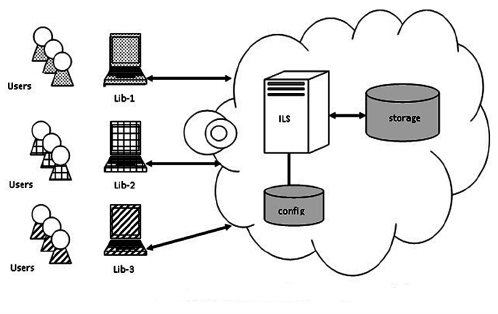What Is Single Instance Storage: The Ultimate Guide for 2025
“what is single instance storage” (SIS) is a data optimization technique that ensures only one physical copy of a file or object exists within a storage system, even if it appears in multiple locations. Instead of saving multiple identical copies, the system keeps a single “master” instance and replaces duplicates with logical references that point back to that original file.
This method eliminates redundancy, optimizes storage utilization, and reduces backup and replication overhead. In enterprise environments where duplicate files are common—such as email servers, virtual desktops, or cloud storage SIS plays a critical role in maintaining both efficiency and cost-effectiveness.
Definition and Core Concept
Single Instance Storage can be defined as:
“A storage mechanism that maintains a single copy of identical data objects while replacing redundant versions with metadata pointers or reference links.”
In simple terms, if multiple users upload or generate the same file, SIS ensures that only one copy is stored on disk. Every duplicate entry references the same object identifier.
Key Attributes
| Attribute | Description |
|---|---|
| Data Scope | Entire files or objects (not file fragments) |
| Deduplication Level | Object-level or file-level |
| Technique | Hash-based identification of identical content |
| Outcome | Reduced storage footprint and improved efficiency |
| Common Use Cases | Email servers, backup systems, OS deployment images |
How Single Instance Storage Works
Step 1: Hash Generation
Each file or object is processed through a cryptographic hash function such as SHA-1, SHA-256, or MD5. This function generates a unique digital fingerprint for the file’s content.
Step 2: Duplicate Detection
The storage system checks whether the generated hash already exists in the repository.
-
If no match is found, the file is stored as a new instance.
-
If a match is found, the system recognizes it as a duplicate.
Step 3: Reference Linking
Instead of saving the duplicate file again, SIS replaces it with a reference pointer—a lightweight metadata entry that redirects access requests to the original copy.
Step 4: Retrieval & Transparency
When users or applications request access, the SIS layer resolves the reference and delivers the file transparently, making the system behave as if every user had their own copy.
Architecture of a SIS System
A single instance storage implementation typically involves three main components:
-
Common Store (Repository)
-
Holds the master copies of unique files.
-
Managed by the SIS service to ensure data integrity.
-
-
Link Table / Reference Database
-
Maps file identifiers or metadata entries to the corresponding repository item.
-
Tracks how many references point to each instance (reference counting).
-
-
File System or Application Layer Integration
-
Provides transparent access to deduplicated files.
-
Handles read/write operations without requiring user awareness of SIS.
-
Example Workflow
-
Two users upload Annual_Report.pdf.
-
SIS detects identical hash values.
-
The first copy becomes the canonical instance.
-
The second copy is replaced by a pointer.
-
Both users can still access Annual_Report.pdf independently.
Example Table: Comparison Between Traditional Storage and SIS
| Feature | Traditional Storage | Single Instance Storage |
|---|---|---|
| Data Duplication | Stores all copies | Stores only one copy |
| Storage Consumption | High | Low |
| Performance Impact | Slower during backup | Faster due to less data |
| Management Complexity | Simple but inefficient | Efficient but metadata-heavy |
| Use Cases | Small-scale systems | Large enterprise repositories |
| Backup Size | Grows exponentially | Controlled by deduplication |
Why Single Instance Storage Matters
The exponential growth of digital data—driven by emails, cloud documents, and multimedia—has made SIS essential for enterprise IT. A 2024 IDC report showed that over 60% of corporate storage contains duplicate data, costing organizations billions in storage hardware and maintenance.
By adopting SIS, enterprises can:
-
Reduce data footprint by up to 40–60%.
-
Accelerate backup and restore times.
-
Optimize cloud storage billing based on unique object counts.
-
Simplify compliance by maintaining a single audit trail for identical content.
Implementation Models of SIS
1. File-System Level SIS
Integrated within the operating system or storage layer.
-
Example: Microsoft’s Remote Installation Services (RIS) in Windows 2000 used SIS to avoid storing multiple OS image files.
2. Application-Level SIS
Implemented within an application’s logic, such as:
-
Email servers: Microsoft Exchange pre-2010 versions.
-
Content management systems: Reduces identical document uploads.
3. Backup/Archival SIS
Used by backup solutions like Veritas NetBackup or Commvault, where redundant data across full backups is eliminated.
4. Cloud and Object Storage SIS
Modern cloud providers implement SIS principles at the object storage level (e.g., AWS S3 object deduplication, Google Cloud Storage coldline optimization).
Advantages of Single Instance Storage
-
Optimize storage capacity by eliminating duplicate full-file copies.
-
Reduce backup and archival costs by storing only unique objects.
-
Enhance replication efficiency in distributed environments.
-
Minimize bandwidth usage during synchronization or uploads.
-
Simplify version control with single-source management.
-
Improve disaster recovery readiness by reducing data redundancy.
Limitations of Single Instance Storage
While powerful, SIS has inherent constraints:
-
No sub-file granularity: It can’t detect internal block-level duplication.
-
Metadata overhead: Reference management increases CPU and memory use.
-
Limited benefit in heterogeneous data: Unique files dominate in multimedia or analytics workloads.
-
Potential hash collisions: Rare but possible in very large datasets.
-
Complex garbage collection: Requires robust reference tracking to safely delete files.
Best Practices for Implementing SIS
1. Choose the Right Hash Algorithm
Use cryptographic-grade algorithms (e.g., SHA-256) for collision resistance.
2. Use Reference Counting
Track how many logical links point to each physical instance to avoid accidental deletions.
3. Combine with Compression
Integrate SIS with lossless compression for maximum efficiency.
4. Maintain Metadata Integrity
Use redundant databases and periodic checksum validation.
5. Audit and Monitor Frequently
Monitor deduplication ratios, storage utilization, and system health.
Real-World Applications of SIS
Enterprise Email Systems
In enterprise email environments, attachments are repeatedly sent to many users. SIS reduces mailbox sizes dramatically by storing one copy of the attachment.
OS Deployment and Virtualization
System image deployment tools store one copy of common OS binaries, reducing gigabytes of duplicate storage per machine image.
Backup and Disaster Recovery
Backup systems use SIS to eliminate redundant backups. This saves time, bandwidth, and long-term archive space.
Cloud Storage Providers
Cloud vendors implement SIS-like functionality to optimize object storage. When thousands of users upload the same file (like popular software installers), only one copy is physically stored.
Single Instance Storage vs. Data Deduplication
| Parameter | Single Instance Storage | Data Deduplication |
|---|---|---|
| Level of Operation | File or object level | Block or chunk level |
| Granularity | Entire file | Sub-file segments |
| Complexity | Lower | Higher |
| Performance Overhead | Minimal | Moderate to high |
| Storage Savings | Moderate | High |
| Typical Use Case | Email, backups, deployment images | Enterprise-scale deduplication systems |
Insight
While both technologies serve similar purposes, deduplication offers finer compression, whereas SIS provides faster and simpler redundancy elimination at the object level. Many modern systems use hybrid approaches—SIS for object-level efficiency and deduplication for intra-object redundancy.
Future of Single Instance Storage
As data generation continues to rise, SIS is evolving into more sophisticated, hybrid models:
-
AI-assisted deduplication for adaptive pattern recognition.
-
Cloud-native SIS layers that integrate across regions.
-
Blockchain-based object integrity ensuring tamper-proof canonical copies.
-
Metadata-driven smart references improving retrieval speed.
SIS will remain relevant in data archival, object replication, and enterprise backup workflows as a foundational optimization layer beneath newer technologies.
Step-by-Step Example of SIS in Action
Scenario: A corporate file server storing identical PDFs shared across departments.
| Step | Action | Result |
|---|---|---|
| 1 | Employees upload the same 10 MB file 50 times | 500 MB of raw data |
| 2 | SIS identifies identical hashes | Retains 1 copy |
| 3 | Creates 49 metadata pointers | Storage usage drops to 10 MB |
| 4 | Retrieval request | Pointers resolve to single instance |
| 5 | Total space saved | 98% storage reduction |
Key Takeaways
-
Single Instance Storage ensures only one copy of identical data is physically stored.
-
It operates primarily at the file or object level using hash-based matching.
-
It’s ideal for environments with high redundancy (emails, backups, OS images).
-
Combining SIS with block-level deduplication yields maximum efficiency.
-
It’s a critical technology for modern storage, backup, and cloud optimization systems.
FAQs
1. What is Single Instance Storage in simple terms?
Single Instance Storage is a data technique that keeps only one copy of identical files, replacing duplicates with reference links to save space and improve efficiency.
2. How is SIS different from data deduplication?
SIS removes duplicate files, while deduplication removes duplicate chunks within files. Deduplication is more granular but also more computationally intensive.
3. Does Single Instance Storage affect performance?
SIS generally improves performance for backups and restores but can introduce slight overhead in pointer resolution during file retrieval.
4. Is SIS still used today?
Yes. Though older forms like Microsoft Exchange SIS were replaced by chunk-level deduplication, the concept underlies modern object storage, email systems, and cloud archives.
5. What happens if the single stored instance is deleted?
Proper SIS systems use reference counting to prevent deletion until all logical links are removed.
6. Can SIS work with encrypted data?
Only if deduplication occurs before encryption. Once encrypted, identical data generates different ciphertext, preventing hash matches.
7. What industries benefit most from SIS?
Industries with massive data duplication—financial services, healthcare, IT, education, and government—benefit greatly from SIS adoption.
8. How much space can SIS save?
Typical space savings range from 30% to 70%, depending on redundancy levels within the stored dataset.
9. Which modern systems use SIS?
Backup software like Veeam, Commvault, and NetBackup, and cloud providers like AWS, Azure, and Google Cloud implement SIS or equivalent logic.
10. Is SIS compatible with cloud storage?
Yes. Cloud-native SIS operates at the object level, using deduplication across buckets and regions to minimize redundant data.
Learn More: Neck and Chest Red Light Therapy: The Ultimate Guide to Skin Renewal and Cellular Repair
Act 3 Scene 1 Merchant of Venice Complete Analysis and Summary
Conclusion
Single Instance Storage remains one of the most fundamental innovations in the history of data storage efficiency. By intelligently eliminating redundant files and retaining only one true instance, SIS achieves substantial savings in storage capacity, cost, and management effort.
While advanced deduplication technologies now extend beyond SIS’s original scope, the core principle of object-level redundancy elimination continues to underpin enterprise backup systems, cloud architectures, and hybrid data management frameworks.







